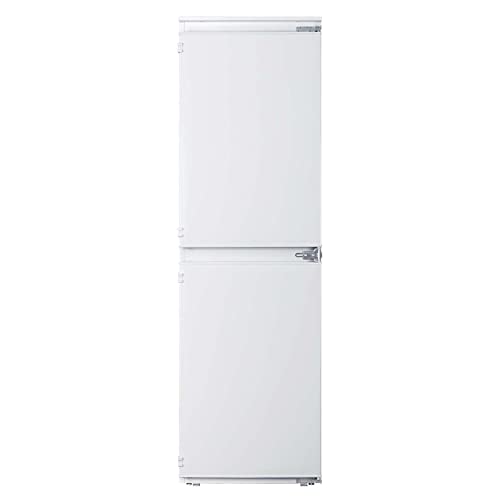Understanding Fridges and Freezers: The Essential Kitchen Appliances
Fridges and freezers are two of the most vital appliances in modern-day cooking areas. These devices serve a crucial role in food preservation and waste decrease by making sure that perishable products remain fresh and safe for consumption. This short article digs into the different types of fridges and freezers, their functionalities, and crucial considerations for choice and maintenance.

Kinds of Refrigerators
The market uses a variety of refrigerator types, each created to satisfy various customer needs. Below is a list of the most common types of Fridges for Sale Uk:
Top-Freezer Refrigerators
- Most common type.
- Freezer compartment lies above the refrigerator section.
- Generally more inexpensive and energy-efficient.
Bottom-Freezer Refrigerators
- Freezer is located at the bottom.
- Enables much easier access to fresh products at eye level.
- Often includes pull-out drawers for better organization.
Side-by-Side Refrigerators
- Refrigerator and freezer areas are surrounding.
- Ideal for narrow kitchen areas and permits simple access to both compartments.
- Frequently includes water and ice dispensers.
French Door Refrigerators
- Integrates a bottom freezer with double doors at the top.
- Deals adequate storage and stylish styles.
- Typically consists of features like temperature-controlled drawers.
Compact Refrigerators
- Smaller size ideal for restricted spaces.
- Frequently used in dorm spaces, studio apartments, or as secondary fridges.
Table 1: Comparison of Refrigerator Types
| Type | Benefits | Drawbacks | Common Size |
|---|---|---|---|
| Top-Freezer | Affordable, energy-efficient | Less practical access to the freezer | 14-30 cu. ft. |
| Bottom-Freezer | Easier access to fresh food | Freezer can be more difficult to organize | 19-30 cu. ft. |
| Side-by-Side | Easy gain access to, water/ice dispenser | Narrow vs. storage space | 22-30 cu. ft. |
| French Door | Trendy, roomy, arranged | More pricey | 20-30+ cu. ft. |
| Compact | Space-saving, portable | Limited storage | 1.7-5.5 cu. ft. |
Types of Freezers
Freezers are a similarly essential appliance for food preservation. They can be found in different designs designed to fit various household needs. Consider the list below types:
Upright Freezers
- Operate like a basic refrigerator with vertical storage.
- Easier to organize with racks and compartments.
Chest Freezers
- Large, horizontal style typically offering more storage space.
- Maintains temperatures much better during power interruptions.
- More energy-efficient than upright designs.
Portable Freezers
- Compact systems ideal for outside activities or little areas.
- Often utilized for camping trips or as short-term storage.
Table 2: Comparison of Freezer Types
| Type | Advantages | Drawbacks | Normal Size |
|---|---|---|---|
| Upright Freezer | Simpler to organize | Less energy-efficient, more floor space | 5-20 cu. ft. |
| Chest Freezer | Holds more products, energy-efficient | Harder to organize | 5-25 cu. ft. |
| Portable Freezer | Compact and versatile | Restricted storage capacity | 1-10 cu. ft. |
Key Features to Consider
When choosing a fridge or freezer, customers should keep in mind a number of features that can enhance functionality:
- Energy Efficiency: Look for models with the ENERGY STAR certification to save money on electrical energy bills.
- Storage Capacity: Evaluate storage needs based upon household size and eating practices.
- Temperature level Control: Some home appliances offer digital controls for precise temperature level settings.
- Adjustable Shelving: Customizable shelving enables optimal company.
- Water and Ice Dispenser: Offers convenience however can take up important space inside.
- Sound Level: Sound scores can affect convenience, particularly in open-concept homes.
Advantages and disadvantages of Having a Fridge and Freezer
While fridges and freezers are important technologies, they likewise have specific benefits and disadvantages:
| Pros | Cons |
|---|---|
| Maintain food life expectancy and decrease waste | Need regular upkeep |
| Permit bulk purchasing and meal prepping | Can be costly to buy and run |
| Offer convenience and fast access to food | Occupy considerable cooking area space |
Maintenance Tips
To guarantee durability and optimum performance of fridges and freezers, consider the following maintenance suggestions:
- Regular Cleaning: Clean the exterior and interior regularly to prevent buildup of dirt and bacteria.
- Inspect Seals: Inspect door seals routinely for leakages to maintain performance.
- Temperature Settings: Keep the fridge at 34-38 ° F and the freezer at 0 ° F for optimal food preservation.
- Thaw as Needed: Chest freezers ought to be thawed frequently to maintain performance.
- Clear Air Vents: Ensure that airflow isn't blocked to enhance energy performance.
FAQs About Fridges and Freezers
Q1: How long can food be stored in a freezer?A: Most foods can be kept in a freezer for several months. Meats and poultry frequently last 4-12 months, while vegetables can last approximately 8-12 months.
Q2: How frequently should I clean my fridge and freezer?A: It is advisable to clean your fridge and freezer every 3 to 6 months, or as needed when spills take place. Q3: Can I put hot food directly in the fridge?A: It is suggested to cool hot food to room temperature level before placing it in the fridge to prevent
raising the temperature level inside the appliance. Q4: Why is my fridge running constantly?A: This might be due to a malfunctioning thermostat, stopped up coils, or door seals that aren't working properly. Fridges and freezers are invaluable
properties to modern families, offering vital services for food storage and preservation.
Comprehending the different types, features, and maintenance requirements can help customers select the right appliances for their requirements and optimize their performance. Welcoming energy-efficient models not just supports sustainable practices but likewise contributes to substantial cost savings on utility bills, making notified choices more important than ever.
